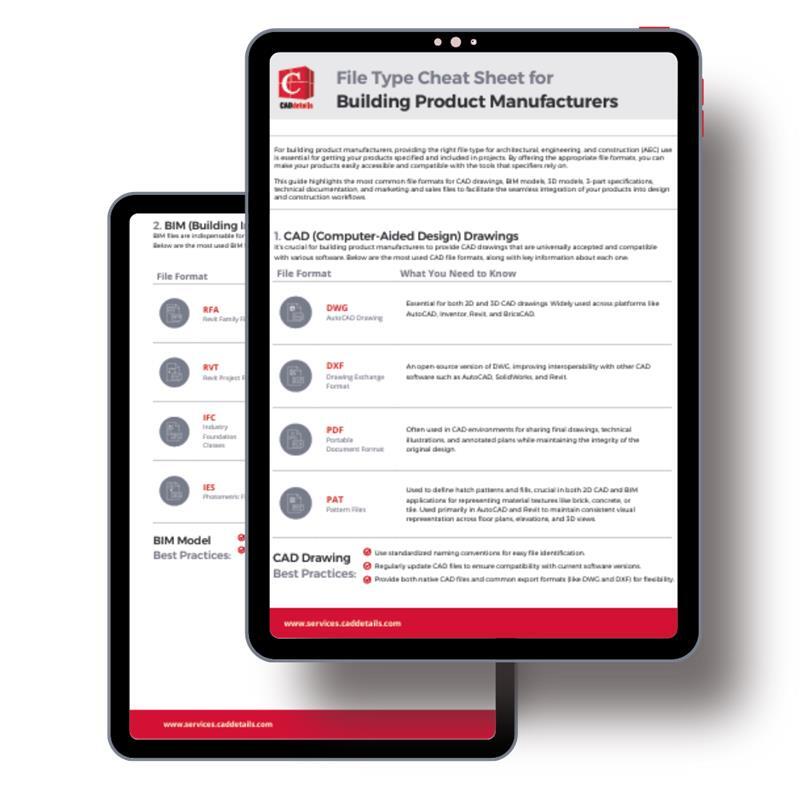Make your products easier to access, evaluate, and specify by providing the right file types for AEC professionals. Our File Type Cheat Sheet highlights the most common file types for CAD, BIM, and 3D models, specifications, technical documentation, and marketing and sales files.
How Our File Type Cheat Sheet Helps You
FAQs
This cheat sheet will save your team time and guesswork by clearly outlining the most important file formats needed by AEC professionals. It ensures you're delivering the right digital assets so your products are easy to incorporate into projects.
Your team will be better equipped to support AEC pros—ultimately boosting your chances of getting specified and standing out as a reliable, forward-thinking brand in the built environment.
Not at all! While it’s helpful for technical teams managing CAD, BIM, and 3D files, the cheat sheet is also designed for marketing, sales, and product teams. It offers clear, actionable insights into what assets AEC professionals need—so your entire team can align on delivering the right content to get your products specified.
The cheat sheet highlights the most common and widely requested file formats across CAD, BIM, and 3D models, as well as specs, technical documents, and marketing and sales materials. It helps you prioritize which files to create and maintain so you can get specified more often.
AEC professionals use a wide range of tools (Revit, AutoCAD, SketchUp, etc.) when creating designs and specifying products. Offering several file types ensures your products are compatible with their workflows, making it easier for them to include you in their projects.
By providing the correct file types in the formats specifiers actually need, you remove friction from their workflow, making it faster and easier for them to choose your products. This cheat sheet outlines exactly which file formats you need to meet these expectations.
Consistently offering accessible, up-to-date design assets positions your brand as professional, forward-thinking, and specifier-friendly. Over time, that builds trust and increases repeat specifications.

